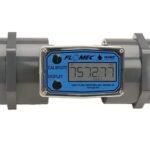Category: Meter
In the world of industrial automation, accurate measurement is the foundation of efficiency and control. Whether it’s tracking voltage in a control panel, monitoring fluid flow in a process line, or ensuring temperature consistency in a furnace, meters provide the real-time data that keeps automated systems performing flawlessly.
From simple analog indicators to intelligent digital sensors, meters are the silent observers that make precision-driven automation possible.
What Is a Meter?
A meter is an instrument used to measure and display physical quantities such as current, voltage, pressure, temperature, flow, or speed.
In automation, meters play a critical role in monitoring system performance, detecting irregularities, and enabling data-driven decision-making.
Modern meters aren’t just about numbers — they’re about smart insights. Many now include digital interfaces, communication ports, and compatibility with PLCs and SCADA systems to ensure seamless integration into industrial networks.
How Meters Work
Meters function by sensing a specific physical or electrical property and converting it into a readable signal or display.
Here’s how it typically works in automation:
- Sensors detect the parameter (e.g., voltage, current, flow, temperature).
- Signal conditioning circuits process the raw signal for accuracy.
- Display units or controllers show readings or transmit data to control systems.
For example:
- A voltmeter measures potential difference across a circuit.
- A flow meter measures the rate of liquid or gas flow through a pipeline.
- A pressure meter (gauge) detects variations in system pressure to prevent failures.
These readings are often fed into controllers or PLCs, which use them to adjust machine operations in real time — maintaining balance, safety, and efficiency.
Types of Meters in Automation
Different applications demand different types of meters. Here are the main categories:
- Electrical Meters – Measure current, voltage, frequency, and power (ammeters, voltmeters, wattmeters).
- Flow Meters – Measure fluid or gas flow using technologies like electromagnetic, ultrasonic, or turbine sensors.
- Pressure Meters (Manometers/Gauges) – Monitor hydraulic or pneumatic pressure in systems.
- Temperature Meters (Thermometers/Pyrometers) – Used for thermal process control in manufacturing and HVAC systems.
- Energy Meters – Record energy consumption for efficiency optimization and cost control.
- Digital & Smart Meters – Provide precise, real-time data with communication protocols like Modbus, Profibus, or Ethernet/IP.
Why Meters Matter in Industrial Automation
Meters are the eyes and senses of automation. Without them, control systems would be operating blind.
Key benefits include:
- 🧠 Real-Time Monitoring: Provide instant feedback for control adjustments.
- ⚙️ Process Optimization: Help fine-tune systems for maximum efficiency.
- ⚡ Safety & Protection: Detect overloads, pressure surges, or thermal variations before they cause damage.
- 📊 Data Logging & Analytics: Enable trend analysis and predictive maintenance.
- 🔗 System Integration: Communicate directly with PLCs, HMIs, and SCADA systems for automated control.
Common Applications of Meters
Meters can be found in nearly every stage of industrial automation. Some key applications include:
- Control Panels – Monitoring voltage, current, and power quality.
- Process Industries – Measuring flow, pressure, and temperature in chemical, pharmaceutical, and food plants.
- Manufacturing Lines – Tracking machine energy use and operational health.
- HVAC Systems – Monitoring air flow, humidity, and temperature for climate control.
- Renewable Energy Systems – Measuring output in solar, wind, and hybrid systems.
- Water Treatment Plants – Using flow and pressure meters for purification and distribution control.
The Future of Meter Technology
As automation advances toward Industry 4.0, meters are becoming smarter, more connected, and more capable than ever before.
Emerging trends include:
- 🌐 IoT-Enabled Meters: Wireless connectivity for real-time cloud monitoring.
- 🔍 Self-Calibrating Systems: Automatic correction for long-term accuracy.
- ⚡ Energy Analytics Integration: To track consumption and optimize sustainability.
- 🧠 AI-Powered Diagnostics: Predict issues before they occur.
- 📱 Remote Monitoring & Control: Access readings and reports from anywhere.
Closing Note
In industrial automation, precision is power — and meters are the tools that make it measurable.
By providing accurate, continuous feedback on system performance, meters ensure machines operate safely, efficiently, and intelligently.
As technology evolves, meters are no longer just instruments of measurement — they are the guardians of precision and the drivers of smarter automation.
📞 Call us: +1 (234) 288 1755
📧 Email: sales@dropshipautomation.com

